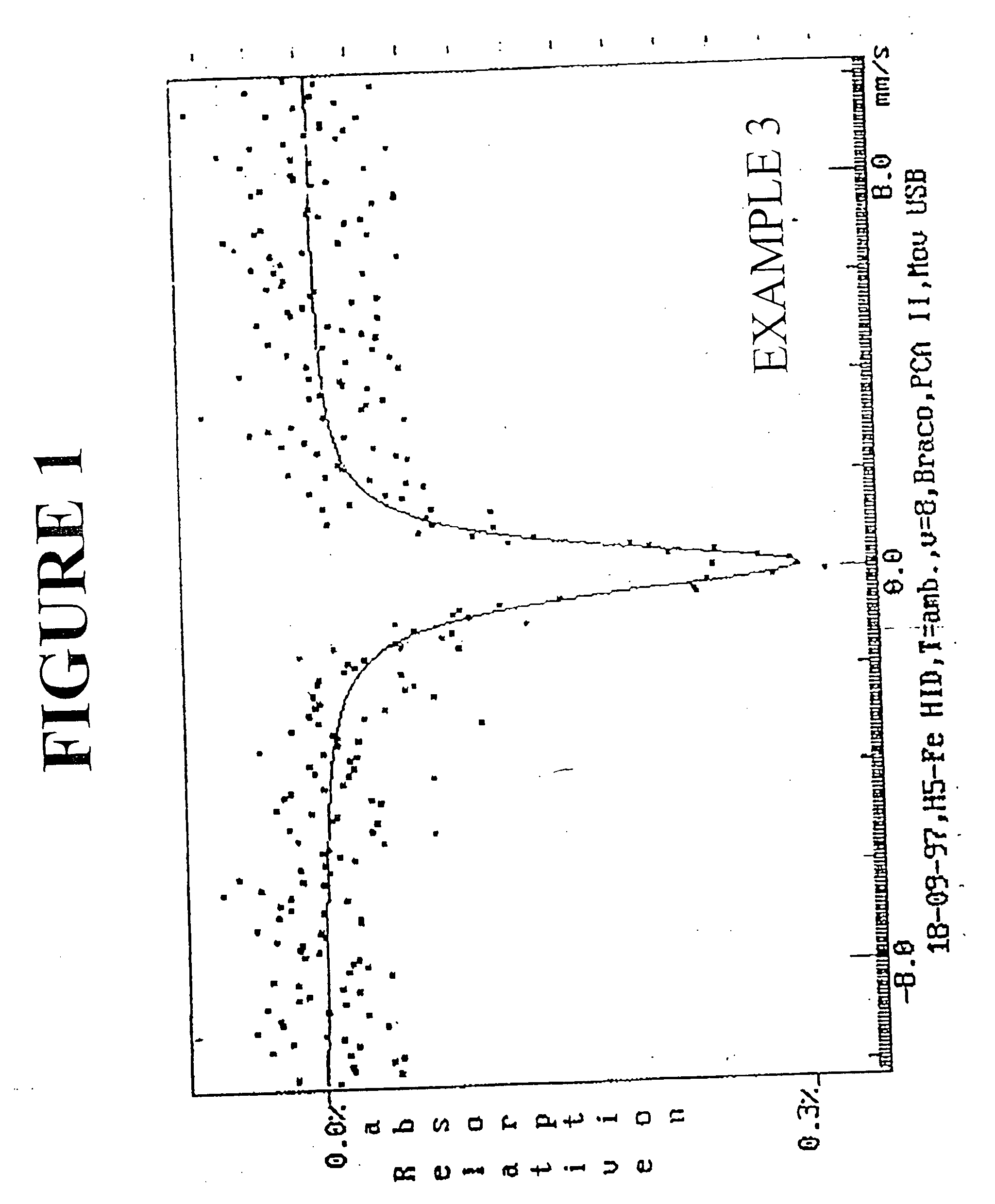Aluminosilicate compositions, preparation and use
a technology of aluminosilicate compositions and compositions, applied in the field of aluminosilicate compositions, preparation and use, can solve the problems of increasing the cost of material production, the inability to completely prevent the escape of metallosilicates into the atmosphere, etc., to achieve the effect of enhancing, supplementing or altering the properties or usefulness of aluminosilicate compositions
- Summary
- Abstract
- Description
- Claims
- Application Information
AI Technical Summary
Benefits of technology
Problems solved by technology
Method used
Image
Examples
example 1
[0110] Preparation of an aluminosilicate material of the ST5 type (SiO2 / Al2O3 ratio of 20) is illustrated. A reaction batch consisting of the following solutions was prepared according to the method of the present invention described above: [0111] Sulfuric acid solution: 6.4 ml of H2SO4 concentrated and 40 ml of distilled water. [0112] Sodium silicate solution: 85 g of sodium silicate and 38 ml of distilled water. [0113] Sodium aluminate solution: 4.2 g of sodium aluminate and 20 ml of distilled water.
[0114] The gel composition in the form of molar ratios of oxides is given below:
SiO2 / Al2O3H2O / SiO2OH / SiO2Na / SiO2Na2O / SiO220.1820.670.100.680.34
[0115] The hydrothermal crystallization was carried out in a stirred 300-ml autoclave to a reaction temperature of 170° C. for a period of 48 hours. The dry material consisted of a pure aluminosilicate phase with an X-ray diffraction spectrum with at least the d values listed in Table 2, above. The chemical composition of the product, express...
example 2
[0116] Preparation of an aluminosilicate material of the MFI type with a SiO2 / Al2O3 ratio of 50 is illustrated. A reaction batch consisting of the following solutions was prepared according to the invention described above: [0117] Sulfuric acid solution: 6.1 ml of H2SO4 concentrated and 40 ml of distilled water. [0118] Sodium silicate solution: 79 g of sodium silicate and 40 ml of distilled water. [0119] Sodium aluminate solution: 1.5 g of sodium aluminate and 20 ml of distilled water.
[0120] The gel composition in the form of molar ratios of oxides is given below:
SiO2 / Al2O3H2O / SiO2OH / SiO2Na / SiO2Na2O / SiO252.0621.890.130.760.38
[0121] The hydrothermal crystallization was carried out in a stirred 300-ml autoclave to a reaction temperature of 170° C. for a period of 36 hours. The dry material consisted of a pure aluminosilicate phase with an X-ray diffraction spectrum with at least the d values listed in Table 2, above. The chemical composition of the product, expressed in molar ratio...
example 3
[0122] Preparation of a ferroaluminosilicate material of MFI type is illustrated. A reaction batch consisting of the following solutions was prepared according to the present invention: [0123] Acid solution of iron (III) nitrate: 12 g of Fe(NO3)3.9H2O, 38 ml of H2SO4 concentrate and 200 ml of distilled water. [0124] Sodium silicate solution: 528 g of sodium silicate and 187 ml of distilled water. [0125] Sodium aluminate solution: 23 g of sodium aluminate and 123 ml of distilled water
[0126] The gel composition in the form of molar ratios of oxides is given below:
Na / Na2O / SiO2 / SiO2 / Al2O3H2O / SiO2OH / SiO2SiO2SiO2Fe2O3Si / Fe22.6920.670.130.810.40169.1684.58
[0127] The hydrothermal crystallization was carried out in a stirred 2-liter autoclave to a reaction temperature of 170° C. for a period of 54 hours. The dry material consisted of a pure ferroaluminosilicate phase with an X-ray diffraction spectrum with at least the d values listed in Table 2, above. The chemical composition of the whi...
PUM
| Property | Measurement | Unit |
|---|---|---|
| temperature | aaaaa | aaaaa |
| temperature | aaaaa | aaaaa |
| temperature | aaaaa | aaaaa |
Abstract
Description
Claims
Application Information
 Login to View More
Login to View More - R&D
- Intellectual Property
- Life Sciences
- Materials
- Tech Scout
- Unparalleled Data Quality
- Higher Quality Content
- 60% Fewer Hallucinations
Browse by: Latest US Patents, China's latest patents, Technical Efficacy Thesaurus, Application Domain, Technology Topic, Popular Technical Reports.
© 2025 PatSnap. All rights reserved.Legal|Privacy policy|Modern Slavery Act Transparency Statement|Sitemap|About US| Contact US: help@patsnap.com



